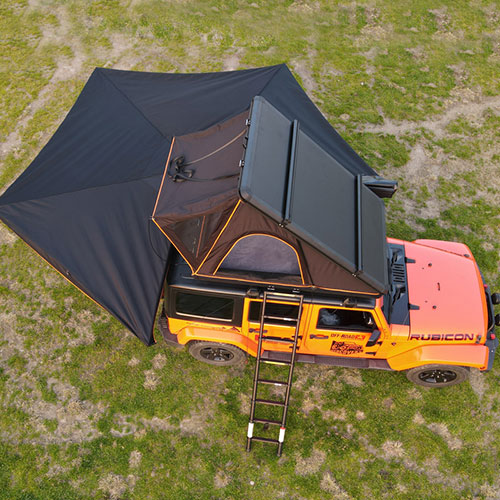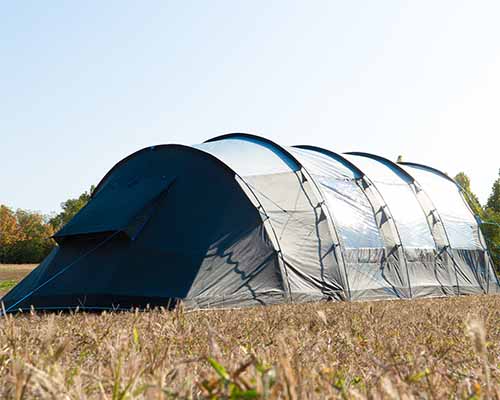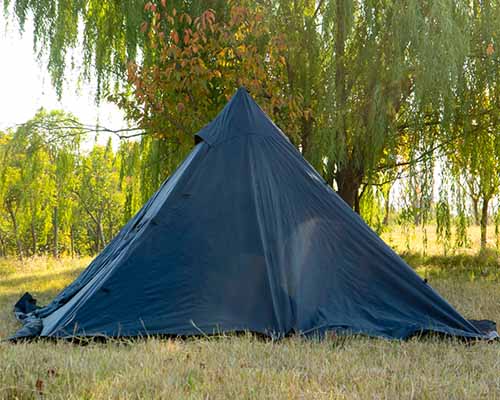Table of Contents
Introduction
In the fiercely competitive outdoor gear market, selling tents alone is no longer enough to stand out. For distributors, retailers, and private label clients, the key to success—and higher profits—lies in product differentiation. This critical advantage begins with precisely addressing consumer needs: selecting core tent materials and their color schemes.
Have you been grappling with these fundamental questions: How to perfectly balance cost, durability, and pack weight? Which tent materials truly resonate with specific customer segments? As a professional outdoor equipment manufacturer, StarLeap offers a comprehensive range of products—from inflatable tents and ultralight mountaineering tents to commercial hotel tents—alongside full OEM/ODM consulting services to address these very concerns. Drawing on our extensive manufacturing expertise, this guide delves into tent material selection and customization strategies, demonstrating how these decisions can maximize your market competitiveness.
Tent Material Selection: The Trade-Off Between Performance and Wholesale Cost

The right tent material is the single biggest factor determining a tent’s final performance, durability, and ultimately, its wholesale cost. As your manufacturing partner, we must select materials based on the expected usage environment, frequency, and regulatory requirements of your target market.
Flysheet Materials: The Core of Protection
The flysheet is the tent’s primary shield, and its composition directly impacts waterproofing and lifespan.
- Polyester: Durability and Cost-Effectiveness
- Characteristics: Polyester is cost-effective, inherently durable, and possesses good natural resistance to ultraviolet (UV) degradation. Crucially for mass-market appeal, it exhibits minimal stretch when wet, ensuring a consistent pitch.
- Market Fit: Ideal for general mass-market, family, and vehicle-based camping tents where cost efficiency and robust basic durability are paramount.
- Nylon: The Lightweight Champion
- Characteristics: Nylon is exceptionally lightweight, boasts superior tensile strength, and packs down small. Due to its nature, it typically requires more specialized coating treatments, such as silicone.
- Market Fit: Essential for the ultralight trekking, mountaineering, and professional expedition markets. This is the definitive tent material for achieving extreme weight reduction.
- Ripstop Technology: Enhanced Safety and Longevity
- Regardless of whether the base tent material is polyester or nylon, integrating the Ripstop grid weave is critical. This technique prevents minor tears from escalating into catastrophic failures, significantly improving the tent’s functional lifespan and contributing to user safety in the backcountry.
Waterproof Coatings: PU vs. Si, A Commercial View
The hydrostatic head (HH) rating is largely determined by the coating. For distributors, the choice between Polyurethane (PU) and Silicone (Si) carries different commercial implications.
- PU Coating (Polyurethane): This is the lower-cost standard, offering good abrasion resistance. While suitable for the majority of recreational tents, its main drawback is the potential for hydrolytic degradation over extended periods, leading to stickiness.
- Silicone Coating (Si-Nylon/Sil-Poly): This is a premium tent material option. While pricier, it offers significantly lower weight, superior long-term waterproof integrity, and dramatically better tear strength. Industry data suggests that tents using Si-Nylon experience fewer warranty claims related to tearing, making them ideal for high-end product lines.
The Decision Matrix: Matching Tent Materials to Market Demand
As a manufacturer, we advise distributors to select their tent material by reverse-engineering from their customers’ “Key Priorities.” This ensures your product is optimally configured to outperform competitors in your specific segment.
| Market Segment (Target Market) | Key Priorities (Core Need) | Recommended Flysheet Tent material | Recommended Frame/Support | Customization Focus |
| Ultralight Trekking/Mountaineering | Minimal weight, high strength, smallest pack volume | 15D/20D Sil-Nylon (Sil-Nylon) | 7001 High-Strength Aluminum / Trekking Pole | Ultra-lightweight components, minimal footprint |
| Family/Car Camping | Space, durability, ease of setup | 190T-300D PU-Coated Polyester | Fiberglass Poles / TPU Air Beams | Ventilation systems, heavy-duty ground sheet |
| Luxury/Commercial Glamping | High-end aesthetic, extreme durability, insulation | Oxford Cloth / Thickened Cotton Canvas | Robust Aluminum / Stable PVC Air Beams | Thermal coating, heavy-duty zippers, quick repairs |
| Economy/Entry-Level | Cost-effectiveness, basic protection | 170T/190T PU-Coated Polyester | Fiberglass Poles | Simplified structure, standardized components |
Custom Color Schemes: Reinforcing Brand Identity and Function

The color scheme is the first visual touchpoint with a customer and is crucial for brand recognition. Proper color selection must balance aesthetic appeal with practical outdoor functionality.
Functional Color Selection for Safety and Use
- Safety and Discovery: Professional mountaineering or expedition tents often use high-visibility colors (like orange or bright red) so they can be easily located in poor weather or emergency situations.
- Stealth and Concealment: Markets such as hunting, military surplus, or specific nature tourism prefer low-saturation, natural colors (like military green or khaki) to blend into the environment.
- Comfort and Aesthetics: Family and casual camping tents can utilize warmer, more vibrant colors or dual-tone designs, which enhance the leisure experience and mood.
Brand Recognition and Component Customization
- Brand Reinforcement: We can customize the main tent material color, as well as secondary components such as guy lines, compression straps, zippers, and buckles, to perfectly match your Corporate Identity (CI) colors. This consistency ensures instant brand recognition on the retail shelf.
- Bespoke Prints and Patterns: For niche markets—such as music festivals or themed outdoor events—we offer bespoke printing and pattern services. Custom graphics applied to the tent material can drastically elevate the product’s retail appeal and uniqueness.
Partnering with Xingyue: Bringing Your Vision to Life

The optimal selection of tent material and color schemes is a complex commercial decision that demands support from a professional and reliable supply chain. As a full-category outdoor tent manufacturer, Xingyue provides the expertise you need.
The Value and Process of OEM/ODM
We offer an end-to-end OEM/ODM solution, working with you through every phase:
- Needs Analysis: Together, we establish your target market, optimal pricing structure, and key performance indicators.
- Material Sourcing: Our experts recommend the best tent material combination to meet your budget and performance requirements, leveraging our global network of suppliers.
- Prototyping & Sampling: We quickly produce customized prototypes for your hands-on market testing and quality verification.
- Mass Production and Quality Control: We guarantee batch-to-batch consistency in tent material quality and enforce rigorous QC protocols to ensure every finished product meets your exact specifications and market requirements.
Our Manufacturing Authority and Commitment
- Supply Chain Mastery: We maintain long-term relationships with leading global fabric suppliers, guaranteeing access to the latest, highest-performing tent material at competitive prices.
- Full-Category Capability: Whether your requirement is a technically demanding inflatable tent or a precision-engineered ultralight shelter, our established manufacturing technologies ensure we can deliver.
- Quality Assurance: All tent material and finished products undergo stringent testing to certify compliance with the durability and safety standards required by global markets.
Conclusion
A successful tent business is built on a deep understanding of market demands and the intrinsic properties of the tent material you choose. The right materials form the basis of product performance and pricing, while customized color schemes ensure your brand stands out in a crowded landscape.
Do not let the complexity of tent material selection limit your market potential. We are ready to be the manufacturing engine behind your next major product line. Contact us today to leverage Xingyue’s material expertise and OEM/ODM services, ensuring your next line of outdoor shelters perfectly meets your customers’ needs and drives substantial business growth.
The outdoor solutions you create are proudly backed by Shandong Xingyue Camping Outdoor Products Co., Ltd. Let’s start building your successful product line now.
FAQ
How does the Denier (D) rating affect the performance of a Tent material?
The Denier rating indicates the thickness of the yarn used. Higher Denier (e.g., 300D) means a thicker, more durable, but heavier tent material, typically used for groundsheets. Lower Denier (e.g., 15D) indicates ultralight, highly compressible fabric, favored for flysheets where weight is critical.
Should I choose a single-wall or double-wall design for my product line?
This depends on the market. Double-wall tents (with separate inner and outer layers) manage condensation better and are ideal for general and cold weather camping. Single-wall designs are lighter and faster to pitch, making them the preferred tent material choice for extreme ultralight and mountaineering markets where every gram counts.
Can Xingyue provide certifications for specialized Tent material like fire-retardant or recycled fabrics?
Yes, we can supply tent material that meets specific regulatory requirements, including CPAI-84 fire-retardant standards and GRS (Global Recycled Standard) certification for eco-conscious product lines, upon request.
What is the typical lifespan difference between PU and Silicone coated Tent material?
While lifespan varies with use, high-quality Silicone-coated tent material generally offers superior long-term durability. Silicone does not suffer from hydrolysis, which is the main factor causing PU coatings to degrade, become sticky, and fail over many years.
